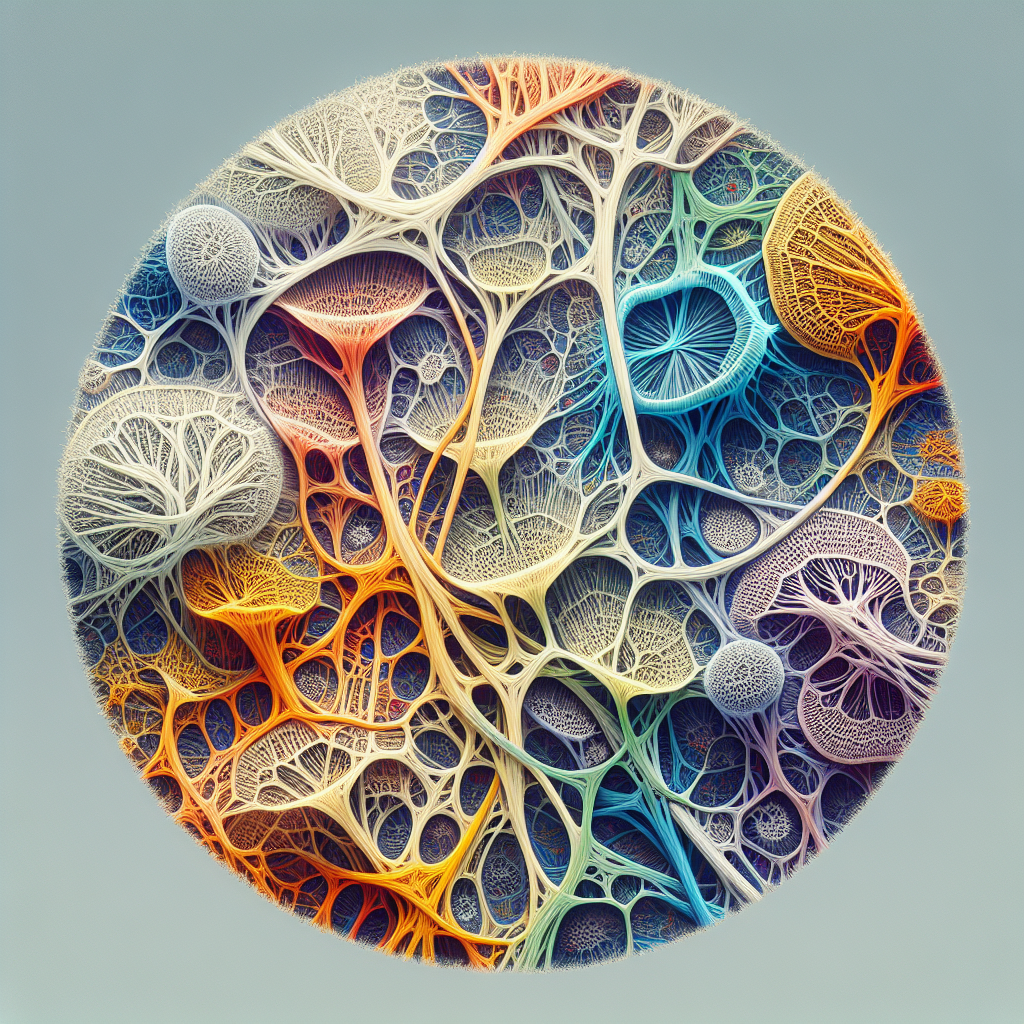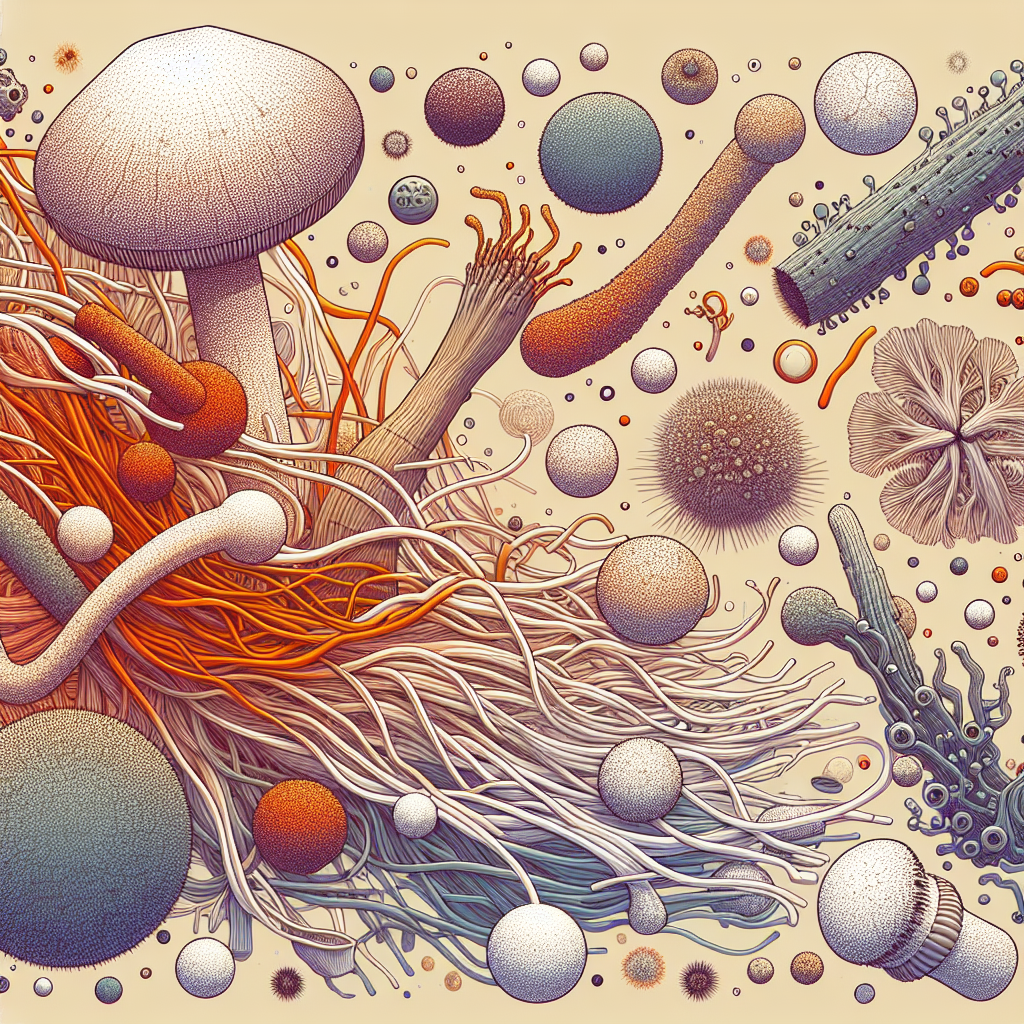In the insightful article “Exploring Different types of Mycelium,” you are led through the fascinating world of fungi and their complex, web-like structures known as mycelium. Your understanding will be enriched as you explore the myriad forms of mycelium–from the types that hold soils together, to those that recycle critical nutrients in nature’s ecosystems, and even the ones that form symbiotic relationships with plants. The abundance and variety of mycelia exemplify the adaptability of this fungal network and underscore its vital role in maintaining the earth’s biodiversity.

Understanding Mycelium
Definition and basic introduction of Mycelium
Mycelium, in basic terms, refers to the vegetative part of a fungus, comprising a network of fine white filaments, or hyphae. It is the foundation of the fungal organism and plays an integral role in sourcing life-sustaining resources. Essentially, it’s the roots of a fungus.
Importance of Mycelium in the ecosystem
The significance of mycelium in the ecosystem should not be underestimated. This vast fungal matrix plays a pivotal role in organic matter decomposition, facilitating nutrient cycling in various ecosystems. It makes vital contributions to soil health by improving its structure, aiding water retention, and interacting beneficially with other organisms, such as bacteria, plants, and insects.
Understanding the components of mycelium
Mycelium’s primary components are hyphae – long, threadlike cells that weave together to form a complex network. These branched structures secrete enzymes that break down organic material, which the mycelium then absorbs and uses for growth.
Characteristics of Mycelium
Morphological features of mycelium
Mycelium exhibits unique morphological features, including its white, thread-like structure that readily expands into the surrounding environment. Additionally, it has adaptive morphologies enabling it to endure various environmental conditions.
Life cycle and reproduction of Mycelium
The life cycle of mycelium begins with spore germination, resulting in hyphal growth that forms a highly interconnected mycelium network. Reproduction occurs when environmental conditions become favorable, enabling the mycelium to produce fruit bodies that release spores, thereby restarting the cycle.
Environmental conditions affecting Mycelium growth
Light, temperature, humidity, and nutrient availability are key environmental factors impacting Mycelium Growth. Typically, a moist and nutrient-rich environment promotes optimal mycelium growth.
Types of Mycelium
Defining criteria for distinguishing types of mycelium
Mycelium types are typically categorized based on several factors, including the structure of their hyphae, pattern of growth, and methods of reproduction.
Overview of different types of Mycelium
Varieties of mycelium include septate, coenocytic, rhizomorphic, tomentose, and matsutake, among others. Each type has unique characteristics, making it uniquely suited to particular environments or tasks.
Identifying Mycelium types
Identifying different types of mycelium requires microscopic examination. Key aspects to look for include the presence of septa (cross walls in the hyphae), the width and length of the hyphae, and the pattern of mycelium growth.
Septate Mycelium
Defining Septate Mycelium
Septate mycelium consists of hyphae that contain septa, or cross-walls, giving each cell its compartment.
Structure and Features of Septate Mycelium
The key feature of septate mycelium is its septa, which divide the mycelium into individual cells. Each cell has one or more nuclei, and the septa have small openings that allow cytoplasm to flow between cells.
Common Fungi with Septate Mycelium
Many fungal species exhibit this septate mycelium structure, including those from the Ascomycota and Basidiomycota phyla.

Coenocytic Mycelium
Understanding Coenocytic Mycelium
Coenocytic mycelium consists of hyphae that lack septa, creating a continuous, multinucleated supercell.
Structure and Features of Coenocytic Mycelium
In a coenocytic mycelium, nuclei are not separated by septa, and the hyphae form a continuous network. This structure allows for rapid growth and efficient nutrient transfer.
Common Fungi with Coenocytic Mycelium
Zygomycetes, a group of fungi, typically exhibit coenocytic mycelium.
Rhizomorphic Mycelium
Introduction to Rhizomorphic Mycelium
Rhizomorphic mycelium is characterized by thick, cord-like structures that resemble the roots of a plant.
Structure and Features of Rhizomorphic Mycelium
The defining feature of rhizomorphic mycelium is its condensed, cord-like strands that aggregate from the finer network of hyphae. These structures can transport nutrients over long distances and penetrate hard substrates.
Common Fungi with Rhizomorphic Mycelium
Many mushrooms, including the Shiitake and Reishi, exhibit rhizomorphic mycelium structures.
Tomentose Mycelium
Understanding Tomentose Mycelium
Tomentose mycelium appears as a dense, felt-like mat due to the high concentration of loosely packed, fluffy hyphae.
Structure and Features of Tomentose Mycelium
The distinguishing feature of tomentose mycelium is its fluffy, wool-like appearance. It develops in response to dry conditions and can form clusters of densely packed hyphae.
Common Fungi with Tomentose Mycelium
Tomentose mycelium is found in many fungal species, such as those belonging to the genus Penicillium.
Matsutake Mycelium
Defining Matsutake Mycelium
Matsutake mycelium refers to the mycelium of the Matsutake mushroom, a prized delicacy in Japan.
Structure and Features of Matsutake Mycelium
The matsutake mycelium displays a symbiotic relationship with trees by connecting to their roots, helping both the fungus and the tree access nutrients.
Common Fungi with Matsutake Mycelium
The Matsutake mushroom, Tricholoma matsutake, is the primary fungus associated with matsutake mycelium.
Mycelium in human use and industry
Use of Mycelium in agriculture
Mycelium contributes significantly to agriculture by improving soil fertility and aiding plant nutrient uptake. It forms symbiotic relationships with plants, exchanging nutrients for sugars, fostering plant health and growth.
Industrial applications of Mycelium
In industry, mycelium is used in the production of enzymes, vitamins, antibiotics, and organic acids. Its fast growth rate and ability to produce a vast range of bioactive compounds make it a key player in many industrial applications.
Medical uses of Mycelium
Mycelium’s medicinal properties have been harnessed for centuries. It contains bioactive compounds, including polysaccharides, terpenoids, and enzymes, which have been found to possess antimicrobial, antiviral, and anticancer properties.
Use of Mycelium in environmental remediation
Mycelium’s ability to break down various organic compounds has shown promise in environmental remediation efforts, contributing to the degradation of pollutants and the restoration of damaged ecosystems.
Future prospects of Mycelium based research and technology
Emerging research areas involving Mycelium
Emerging research is focusing on tapping the potentials of mycelium in multiple fields, including renewable resources, waste management, and myco-remediation.
Potential for new Mycelium based products
Mycelium holds enormous potential for new product development. It’s already being utilized in the creation of sustainable packaging, textiles, and building materials, with many more applications yet to be realized.
Role of Mycelium in future sustainable technology
Mycelium-based technology may revolutionize sustainability. Its capacity for carbon sequestration, biodegradability, and eco-friendly production processes suggest promising roles in shaping a greener, more sustainable future.
